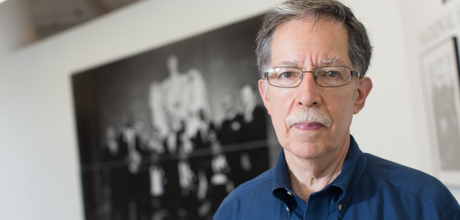By Brittney Dunkins
It was a muggy day in Washington on Aug. 28, 1963, when the March on Washington for Jobs and Freedom, a watershed moment in the civil rights movement and American history, took place on the National Mall.
Many have heard the story told as part of the nation’s narrative, but for Mike Wenger, a professorial lecturer in the Department of Sociology at the George Washington University, and the more than 250,000 people who stood with him at the march, the day became an integral part of their personal story.
“At that time the issues were very clear,” Mr. Wenger said. “It was about the right to vote, the right to not be discriminated against in employment, the right to attend desegregated schools. It was about the right to eat and live wherever you could afford and the right to not be killed because of the color of your skin, like Emmitt Till for example.”
The glaring inequalities suffered by black Americans who lived without these rights brought the then-21-year-old son of union organizers to the march with a cohort of his fellow Queens College students, representing their chapter of the Congress of Racial Equality (CORE).
In New York, the Queens College CORE chapter was involved in civil rights activities, and the work helped Mr. Wenger, who was studying political science and education at the time, find his passion.
“One of the great experiences of college is to have the freedom and ability to speak up and to act on issues of social justice,” Mr. Wenger said. “It really set a context for the rest of my life.”
A group of 16 Queens College students, including Mr. Wenger, spent the summer of 1963 in Prince Edward County, Va., teaching black children who were shut out of schools for four years after the county chose to close them down instead of desegregating.
“I was blessed to grow up in a family where these issues were important and these activities were encouraged from a very young age,” he said. “There were a lot of parents who were afraid to let their children go because of the potential danger and my parents actually convinced them; they thought it was important.”
At the end of the summer, on the way home to New York, the CORE students decided to go to the march as the buzz around the event grew. They drove into town on Aug. 27, 1963, and slept on the floor of a church.
“There was a sense that it was really important to have a huge show of strength, and I think people all over the country felt that,” he said. “People saw the violence perpetrated against non-violent protestors on their television and they felt compelled to act.”
For Mr. Wenger the call to action was personal.
“When you see young people and students marching in Birmingham, Ala., and having police dogs, fire hoses and electric cattle prods used against them, it’s enough to make you furious,” he said. “It helped to fuel the passion of many students. “
According to Mr. Wenger, by the time they wandered through the crowd, hundreds of thousands of people of different ages, class backgrounds and races were flanking all sides of the reflecting pool leading up to the Lincoln Memorial.
“We were talking and listening to the speeches with one ear, but I passionately remember speeches by Walter Reuther, who was the head of the United Auto Workers; Congressman John Lewis, who was the head of the Student Nonviolent Coordinating Committee (SNCC); and Rabbi Joachim Prinz.”
Toward the end of the day, Martin Luther King Jr. took the stage and gave his famous “I Have a Dream” speech, which in the moment, perhaps due to poor acoustics, did not seem to Mr. Wenger to be the powerful symbol of the movement it has become.
“It wasn’t until later that we realized the historic nature of the speech,” he said. “Luckily there were many recordings of the speech and listening to it was very inspiring.”
Now, 50 years later, Mr. Wenger teaches in classrooms that closely mimic the dream described in Dr. King’s speech.
“I often talk to my students about the fact that a diverse classroom of students would not have been possible in most places 50 years ago,” he said. “Having a diverse student body and learning to interact meaningfully with people of different backgrounds is absolutely critical to our society.”
Though there has been much progress, Mr. Wenger is all too aware of the consequences of not paying due diligence to questions of human rights.
He cited the recent U.S. Supreme Court decision to strike down a portion of the 1965 Voting Rights Act, a key piece of civil rights legislation. Ironically, enactment of the law is largely considered a result of the success of the march.
“Today’s issues are more difficult to get a handle on,” he said. “For example, although there is still job discrimination, it isn’t nearly as visible, and though there are still efforts at voter suppression, it's more subtle than it was 50 years ago.”
“The key is for students to be aware that there are still enormous inequities in our society,” Mr. Wenger said. “If they are aware and they care, they’ll find ways to get involved.”


